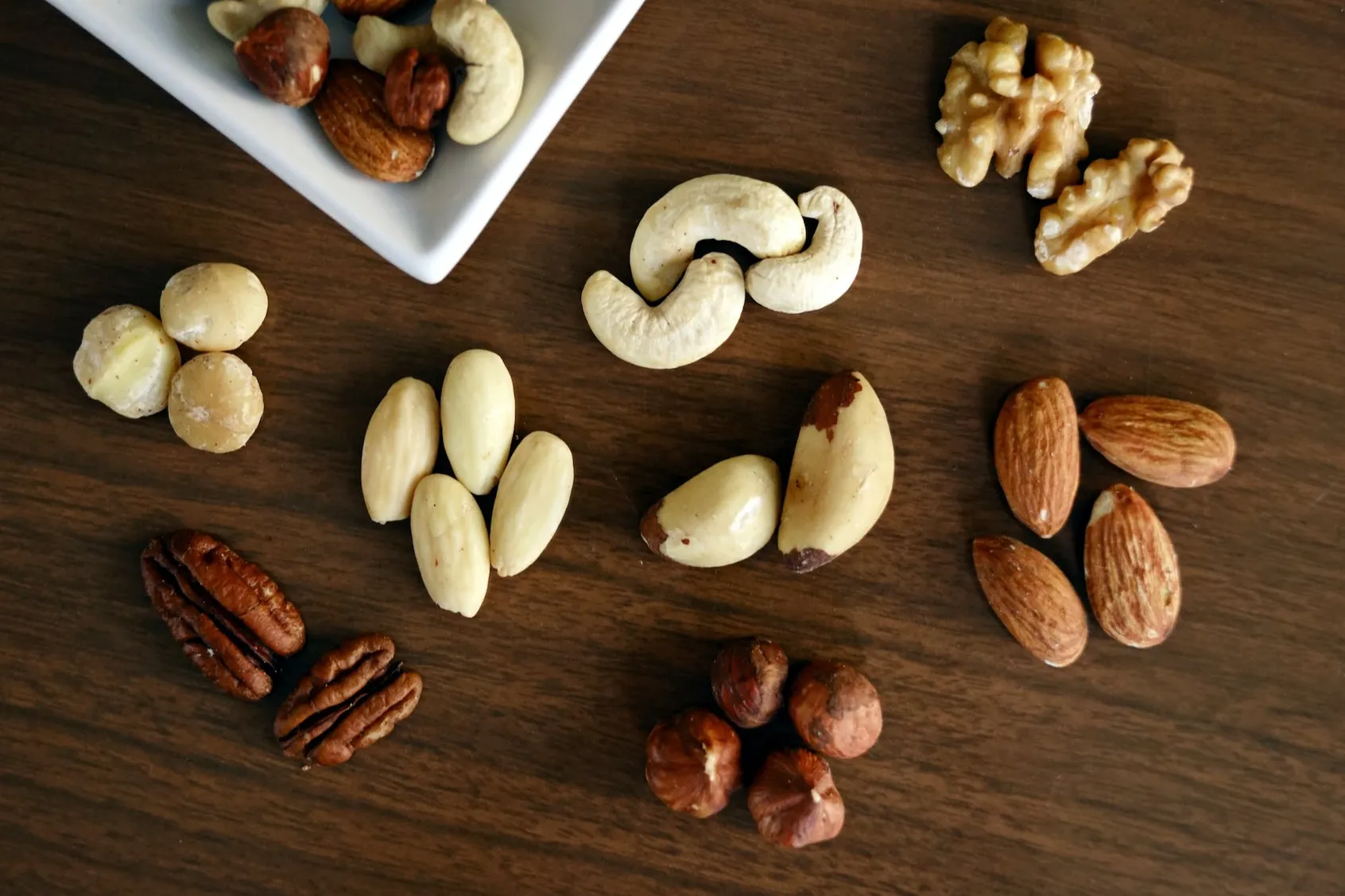Replacing wood under your kitchen sink is a great way to enhance the durability and longevity of your kitchen. It is a relatively simple project that can be completed in a few hours and doesn’t require a lot of special tools.
In this step-by-step guide, we will walk you through how to replace wood under the kitchen sink to ensure a successful outcome. With the right materials and a little patience, you can have a new and improved kitchen sink in no time!
How To Replace Wood Under Kitchen Sink?
Replacing the rotted wood under your kitchen sink can be intimidating, but with a few simple steps, you can quickly and easily replace the rotted wood. Before you begin, it is important that you have the necessary tools and materials to complete the job. You will need a screwdriver, a hammer, a drill, a saw, a level, a measuring tape, screws, a replacement piece of wood, and wood glue.
Start by emptying the area beneath your sink so that you can access the rotted wood. Once the area is cleared, you will need to identify the source of the rot. This could be due to water damage, insects, or simply age. If the wood is dry and brittle, the rot has likely gone deep, and it may be necessary to replace the entire section.
Once you know the extent of the damage, you can begin the process of replacing the wood. Use your drill to remove the screws that hold the old wood in place. Then, use your saw to cut the old wood away. Once you have removed the old wood, measure the area and cut the replacement piece to fit.
Next, you will need to secure the replacement wood in place. Use wood glue to attach the new piece of wood to the existing framing, then use your screwdriver to secure it in place. Make sure to use screws the same size and length as the original screws.
Once the replacement wood is secure, use your level to ensure the new piece is level with the surrounding area. Finally, use your hammer to tap the new piece of wood in place so that it lines up with the rest of the sink area.
Replacing the rotted wood under your kitchen sink can be a simple task. With the right tools and materials, you can easily and quickly replace the rotted wood and restore the area beneath your sink.
Here is the detailed step-by-step guide:

Gather Necessary Materials
Replacing the wood under your kitchen sink can be challenging, but it’s doable with the right materials. Here’s a list of items you’ll need to gather before getting started:
- Safety gear, including gloves and eye protection.
- Measuring tape to measure the dimensions of the wood needed.
- Saw to cut the wood to the correct size.
- Sandpaper to smooth the edges of the wood.
- Screwdriver to remove the old wood and attach the new wood.
- Wood screws to secure the new wood in place.
- Wood glue to help strengthen the joints between the wood and any other materials.
- Replacement plumbing pipes and fittings, if necessary.
Once you have all of these materials, you’ll be ready to replace the wood under your kitchen sink. As always, be sure to take all necessary safety precautions and consult a professional if you’re unsure about any part of the process.
Remove Old Wood
The first step is to inspect the area and determine the extent of the damage. If the rotted wood is localized, you may only need to replace the affected pieces. If the damage is more extensive, you may need to replace the entire structure. Once you have determined the scope of the work, you will need to prepare the area by removing any debris or mold.
The next step is to turn off the water supply to the sink. This will prevent any further water damage to the area. Once the water is shut off, you can remove the existing wood. Carefully unscrew the screws holding the wood in place and pull it out. Make sure to save all the screws and the pieces of wood, as you will need them to put the new wood in.
Measure For New Wood
Next, you must measure the area and obtain the necessary materials. This includes wood, screws, nails, sandpaper, and sealant. You may also need a jigsaw or saw to cut the wood to the desired size and shape. Once the materials have been gathered, you can begin the replacement process.
Cut New Wood To Fit
Start by cutting the wood to the correct size and shape. Ensure that any edges and corners are smooth and well-sanded so the wood will fit securely in place. Use a saw to cut the wood to the correct size and shape. You can use a jigsaw or a hand saw if you don’t have one.
Once the wood is cut, use a hammer or nail gun to attach the wood to the structure. Use enough nails or screws to secure the wood and won’t move or shift.

Attach New Wood To Sink
The next step is to attach new wood to the sink. You must measure the space and purchase wood with the same dimensions. If you have a sink with a curved front, you will need to purchase wood that has been pre-cut to fit the curve. If you are unsure of the measurements or need access to pre-cut wood, you can always have a local lumberyard cut the wood to your desired size.
Once you have the wood, you can attach it to the sink using screws or nails. If you are using screws, use a screwdriver that is the correct size and type for the screws you are using. Once the screws are in place, you will need to make sure that they are tight so that the wood does not come loose. If you are using nails, you must use a hammer and ensure the nails are secured tightly.
Secure With Fasteners
Once the wood has been cut to size, the next step is securing it. Depending on the type of wood used and the sink’s weight, you can use screws or nails to attach the wood to the floor. Ensure that the screws or nails are tightened properly, as a loose connection could lead to the wood becoming unsteady and could cause further damage to the kitchen.
Finally, you can use a sealant to protect the wood from moisture and ensure it is waterproof. This is especially important if you use plywood, as it is prone to moisture damage. Once the sealant has dried, your new wood under the kitchen sink is ready to use.
Caulk Around New Wood
The next step is to caulk around the new wood. This will help to seal out moisture and protect the new wood from further water damage. Begin by cleaning the area around the new wood, removing any debris or dirt. Then, using a caulk gun and silicone-based caulk, carefully apply a bead of caulk around the perimeter of the wood.
Make sure to be thorough in your application to ensure a proper seal. Once the caulk is applied, smooth it out with a wet finger and allow it to dry completely before moving on to the next step. This will ensure the new wood is sealed and protected from further water damage.
Install New Fixtures
Now you can begin installing the new fixtures. First, attach the new P-trap to the sink drain. Make sure it’s securely attached, as this will prevent leaks. Next, connect the water supply lines to the faucets. After that, attach the sink strainer to the drain. Once everything is installed, you’ll need to install the new frame. This is done by screwing the frame into the wall studs. The last step is to attach the sink drain to the P-trap.

Test For Leaks
To do this, turn on the water supply and check for leaks or water damage around the sink. If you notice any wet spots, the wood under the sink may likely be compromised and require replacement.
Ensure to also check the sink stopper and the supply lines for any signs of water damage. If you discover any leaks, it is best to repair them before replacing the wood under the sink.
The best way to test for leaks is to pour a small amount of water into the sink and watch to see if it collects in any particular area. If it does, this is a sign of a leak, and you will need to repair it.
You can also inspect the area around the sink for any water damage, such as discolored or rotted wood. If you find any, it is likely that the wood under the sink is also compromised and needs to be replaced.
Clean Up Area
To clean up, first, begin by turning off the water supply to the sink and disconnecting the drain pipe. Once the water is turned off and the drain pipe is disconnected, it’s time to start cleaning. Start by removing any debris that may have accumulated under the sink, such as sponges, rags, and cleaning supplies.
Once all the debris has been removed, use a damp cloth to wipe down the surfaces of the sink and surrounding area, including the pipes and faucet. This will help remove any dirt or grime that may have built up over time. Once everything is clean and dry, it’s time to start replacing the wood under the sink.
Replace Particle Board Under Sink
Replacing the particle board is relatively easy and can help prevent future water damage and other problems. Here is a step-by-step guide to replacing the particle board under your kitchen sink:
First, turn off the water and disconnect the pipes leading to the sink. Place a bucket or pan underneath the pipes to catch any residual water. Then remove any drawers or shelves blocking your access to the particle board.
Next, use a screwdriver to remove the screws holding the particle board. Carefully pull the particle board away from the wall and discard it. Take measurements of the opening and then cut a new piece of particle board to fit the space.
Next, attach the new particle board with a hammer and small nails. Ensure the nails are driven securely so the particle board will not move. Once the particle board is in place, start reattaching the drawers or shelves to the wall, followed by the pipes.
Finally, turn the water back on and check for any leaks. Turn the water off and reseal the connections if you notice a leak. Once the connections are sealed, and the water is running properly, you will have a new particle board under your sink, preventing water damage and other potential problems.
Best Wood For Under Kitchen Sink
The area under the kitchen sink is one of the most commonly used spaces in a kitchen. It’s where we frequently store cleaning supplies, dish soap, garbage bags, and other items. As a result, it’s important to choose the right type of wood to use for the bottom of the cabinet to ensure that it withstands frequent use and potential water damage. Here are some of the best woods for under kitchen sink cabinets:
- Plywood – is a popular choice for under kitchen sink cabinets, as it is strong, durable, and water-resistant. It is also less expensive compared to other types of wood. Plywood is made up of thin layers of wood glued together to create a solid board. These layers are arranged to make the board less susceptible to warping or cracking over time.
- Hardwood – is another great choice for under kitchen sink cabinets. Types of hardwood like oak, maple, and cherry are highly durable and can withstand constant exposure to moisture. Hardwood is also resistant to pests like termites and is known for its heat-resistant properties. However, hardwood can be more costly compared to other types of wood.
- Particleboard – is often used as a substitute for plywood due to its affordability. It comprises wood chips that are compressed and bonded with an adhesive. However, particleboard is less durable than plywood or hardwood and is more susceptible to moisture damage. To protect particleboard, you may need to seal it with a varnish or paint.
- MDF (Medium-Density Fiberboard) – is a composite material of wood fibers, wax, and resin. It is often used as an alternative to solid wood due to its affordability and resistance to warping or cracking. However, like particleboard, it’s less durable than hardwood or plywood and can be more susceptible to water damage.
Overall, the best wood for under kitchen sink cabinets is those that are strong, durable, and resistant to moisture and humidity. Plywood and hardwood are the best options due to their ability to withstand water exposure and their long-lasting durability. While particleboard and MDF are cheaper options, they may require additional upkeep to prevent warping or cracking caused by moisture.
How To Replace Kitchen Cabinet Bottom Panel?
If you’ve noticed that the wood panel underneath your kitchen sink is starting to show signs of wear and tear, it’s time to replace it. Replacing the wood panel is a fairly straightforward process that can be completed in a few hours. Here’s how:
- First, remove the cabinet door(s) and any drawers from the cabinet you need to repair.
- Next, remove the bottom panel by unscrewing any screws or nails that are holding it in place. If the panel is glued in, use a crowbar or chisel to pry it loose.
- Measure the dimensions of the panel you removed so you can cut a new one to size.
- Cut a new panel from the appropriate material. You can use plywood, MDF, or particle board for this purpose.
- Sand the edges of the new panel so they are smooth and fit snugly in the cabinet.
- Install the new panel in the same way the old one was removed. Use screws or nails to hold it in place, or glue it if necessary.
- Finish the repair by painting or staining the new panel to match the rest of the cabinet.
Conclusion
In conclusion, replacing the wood under your kitchen sink is easy if you follow the right steps. All you need to do is gather the necessary materials, make the measurements, cut the wood, and then fit the new piece. With the right tools and patience, you can successfully replace the wood under your kitchen sink in no time.
Frequently Asked Questions:
What is the board under the sink called?
The board under the sink is typically called a false front panel or a false drawer front.
Can you replace just the bottom of a kitchen cabinet?
Yes, replacing just the bottom of a kitchen cabinet is possible. Depending on the cabinet’s design, it may be necessary to remove the entire cabinet door to access the bottom of the cabinet and replace it.
How do you replace kitchen cabinets under the sink?
First, remove the old cabinets with a hammer and screwdriver to replace the kitchen cabinets under the sink. Measure the space and purchase new cabinets, then attach them to the wall and floor with screws and ensure they are level. Install the sink and plumbing fixtures, then check that everything works properly by turning on the water.
How do you fix a water-damaged cabinet under a sink?
If the cabinet is made of wood, it is best to remove the cabinet and allow it to dry out completely. Once the cabinet has dried, apply a wood sealer to help protect it from future water damage. If the cabinet is made of metal, use mild detergent and warm water to clean it and then dry it thoroughly. If necessary, use a rust remover to remove any corrosion. Once the cabinet is dry, apply a coat of paint or a protective sealant to help protect it from future water damage.
What type of wood is best to use when replacing wood under the kitchen sink?
The best type of wood to replace wood under the kitchen sink is plywood or particle board. Both of these materials are waterproof and resistant to water damage. Additionally, they are easy to cut and install, making them ideal for this project.
How often should the wood be replaced under the kitchen sink?
The frequency of replacing the wood under the kitchen sink will depend on the condition of the wood and the environment in which it is installed. In general, it is recommended that the wood be inspected annually and replaced as needed.
Are there any special tools required to replace the wood under the kitchen sink?
No special tools are required to replace the wood under the kitchen sink. Basic tools such as a drill saw and screws should suffice. Additionally, sandpaper, nails, and glue may be necessary depending on the type of wood being used.
Can the wood under the kitchen sink be painted?
Yes, the wood under the kitchen sink can be painted. However, it is important to choose a paint designed for wet areas and prepare the surface before painting properly.
